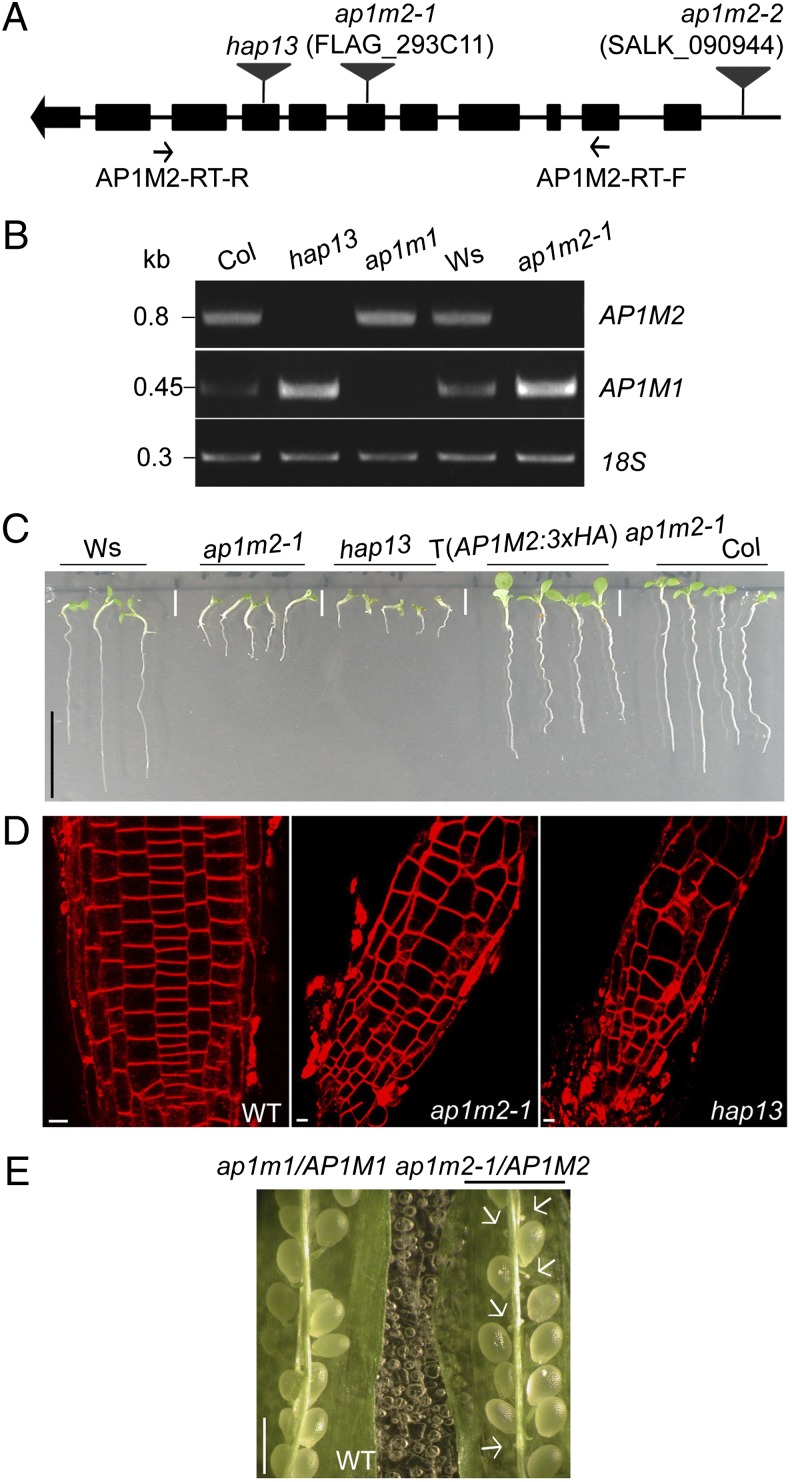Fig. 1.
T-DNA insertional AP1M2 mutants, ap1m2-1 and hap13, display growth-retardation phenotypes. (A) Diagram of the T-DNA insertions: ap1m2-1 (FLAG_293C11), sixth exon, ecotype Ws; ap1m2-2 (SALK_090944), promoter; hap13, eighth exon, ecotype Columbia (Col). (B) RT-PCR analysis with the primers indicated in A to detect AP1M2 and AP1M1 transcripts in ap1m2-1, hap13, and a T-DNA insertional AP1M1 mutant (see also Fig. S4). 18S rRNA (18S) was used as loading control. Kb, kilobase. (C and D) Phenotypes of ap1m2 mutants. (C) Seedling root growth is retarded in ap1m2 mutants. This mutant phenotype was fully complemented by expression of AP1M2::AP1M2:3×HA. T, transgene. (D) Seedling roots of WT and ap1m2 mutants stained with FM4-64. Note the irregular and swollen root cells in ap1m2-1 and hap13. (E) F1 offspring of self-fertilized ap1m1/AP1M1 ap1m2-1/AP1M2 (see also Tables S1 and S2 for genetic analysis). Arrows indicate unfertilized ovules. [Scale bars: 1 cm (C); 5 μm (D); 1 mm (E).]

